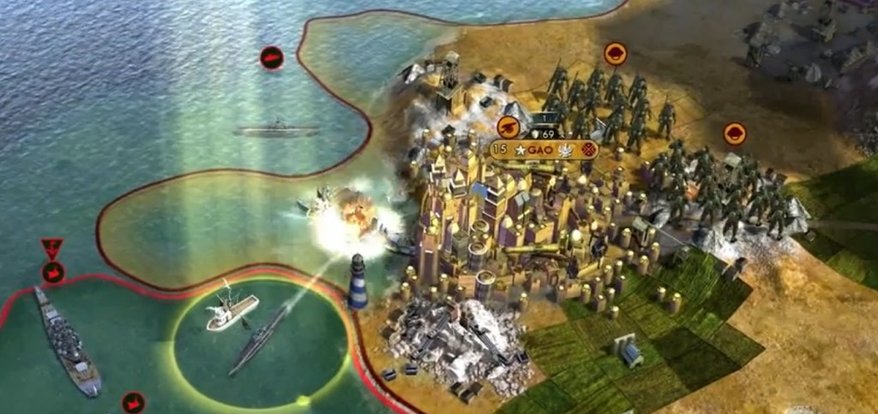
Jon Shafer, designer of Civilization V , has successfully funded his upcoming At the Gates on Kickstarter with 22 days to spare. Today, in an update on the Kickstarter page, he took a long and merciless look into the mirror of self-criticism, admitting what he perceives as mistakes in the design of Civ 5 that he hopes to make up for in this new project. Everything from AI programming to unit stacking is dissected.
One particular element of Civ 5 he singled out was the AI design, and the way that many of the computer-controlled leaders would behave somewhat randomly. He pins this on a very complex diplomacy system with lots of moving parts, that often didn't present any kind of outward logic to the player. "The only thing which matters in a game is the experience inside the player's head ," he wrote. "It doesn't matter what your intentions are or what's going on under the hood if the end result just isn't fun.
"With [At the Gates] I'm staying completely focused on the end goal: results. This means a much simpler AI system , which in turn will result in a much stronger opponent. When you as the developer know exactly what an AI player is doing and why, it becomes much easier to recognize bad behavior and fix it."

He was also very critical of his decision to institute the One Unit Per Tile rule, explaining that it caused issues with everything from AI to production times.
"In Civ 5, every unit needed its own tile, and that meant the map filled up pretty quickly. To address this, I slowed the rate of production, which in turn led to more waiting around for buckets to fill up. For pacing reasons, in the early game I might have wanted players to be training new units every 4 turns. But this was impossible, because the map would have then become covered in Warriors by the end of the classical era. And once the map fills up too much, even warfare stops being fun.
"...The key is the map. Is there enough of room to stash units freely and slide them around each other? If so, then yes, you can do it. For this to be possible, I'd think you would have to increase the maximum map size [of Civ 5] by at least four times. You'd probably also want to alter the map generation logic to make bottlenecks larger and less common."
If you're in the mood for a long read, you can check out the full essay , which goes through just about every design element in Civ 5 and puts it under the microscope, offering solutions to his perceived problems that will be used in At the Gates. In case you missed it, you should also peruse our interview with Jon about the game.
Keep up to date with the most important stories and the best deals, as picked by the PC Gamer team.
Len Hafer is a freelancer and lifelong PC gamer with a specialty in strategy, RPGs, horror, and survival games. A chance encounter with Warcraft 2: Tides of Darkness changed her life forever. Today, her favorites include the grand strategy games from Paradox Interactive like Crusader Kings and Europa Universalis, and thought-provoking, story-rich RPGs like Persona 5 and Disco Elysium. She also loves history, hiking in the mountains of Colorado, and heavy metal music.

